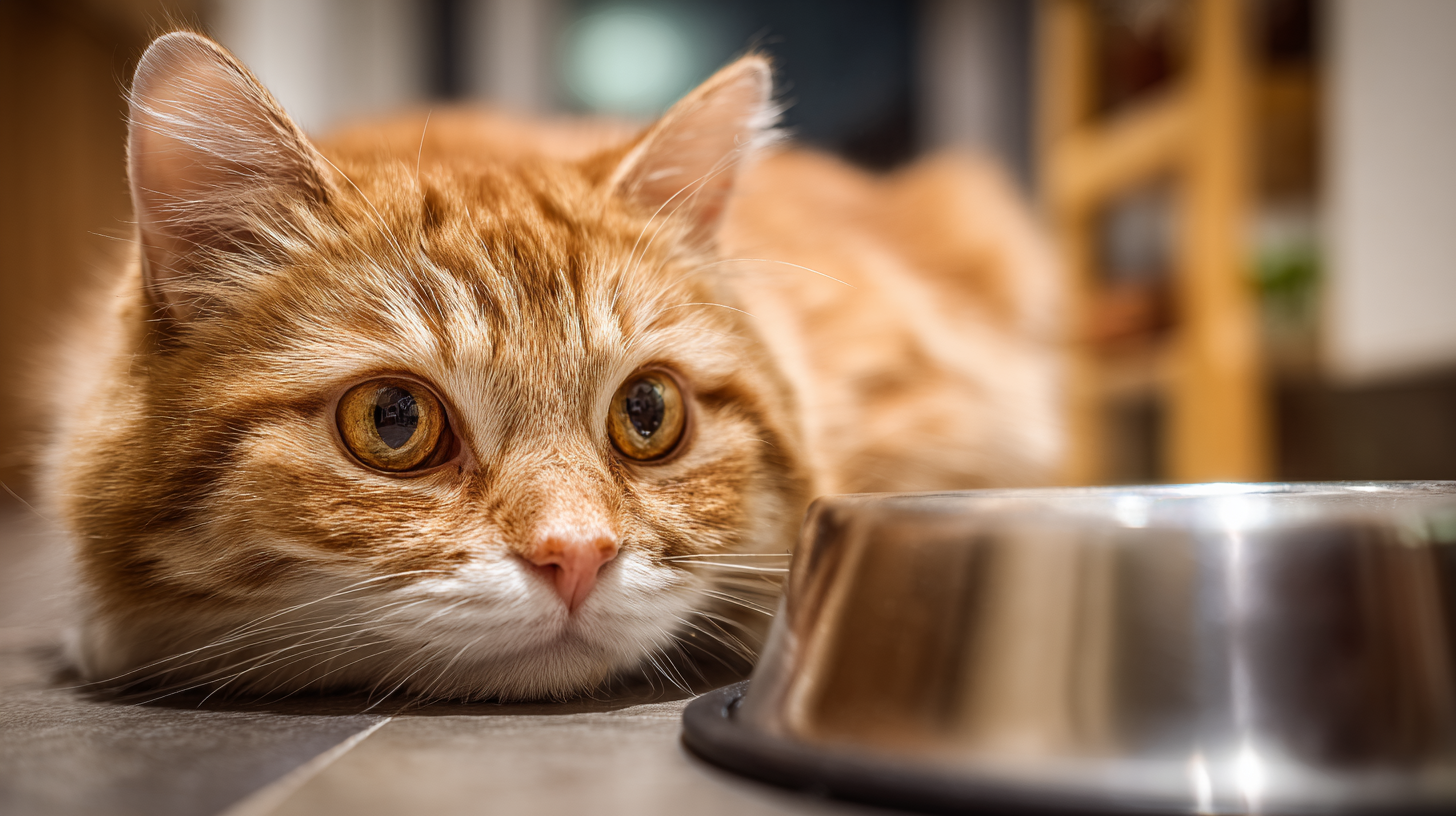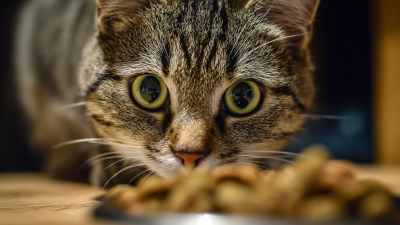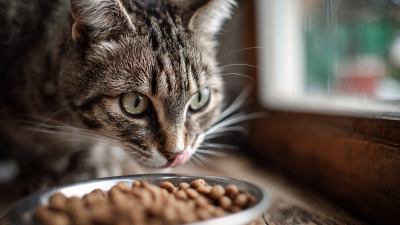Choosing the best Kitty Wet Food is crucial for maintaining the health and well-being of our feline friends. According to a study conducted by the Association of American Feed Control Officials (AAFCO), proper nutrition significantly affects a cat's longevity, with nutritional deficiencies linked to various health issues. With over 70% of cat owners reporting that their pets prefer wet food due to its palatability and moisture content, it is essential to understand the factors that make kitty wet food nutritionally adequate. A comprehensive review published in the Journal of Feline Medicine and Surgery highlights that high-quality wet food can play a vital role in supporting hydration, urinary health, and overall digestive well-being in cats. Thus, when selecting the right kitty wet food, pet owners must consider ingredients, protein sources, and the specific dietary needs of their cats to ensure a balanced and healthy diet.

When selecting wet food for your cat, understanding their unique nutritional needs is paramount for promoting optimal health. Cats are obligate carnivores, which means their diets must be high in protein and low in carbohydrates. According to the Association of American Feed Control Officials (AAFCO), a cat's diet should consist of at least 30% protein to support muscle maintenance and energy levels. High-quality wet food typically contains animal proteins as the primary ingredients, making them a preferable choice for fostering overall well-being.
Moreover, moisture is a crucial aspect of a cat's diet, particularly because many cats do not drink enough water. A report from the Journal of Animal Physiology and Animal Nutrition emphasizes that wet food, which contains around 70-80% water, can help ensure that your feline friend stays hydrated, ultimately supporting kidney and urinary tract health. Additionally, with obesity being a growing concern in felines—affecting approximately 60% of cats according to the Association for Pet Obesity Prevention—choosing a balanced wet food can aid in weight management while satisfying your cat's appetite and cravings.
When selecting the best wet cat food for your feline friend, it's essential to focus on key ingredients that promote health and vitality. Cats are obligate carnivores, which means they require a diet high in protein to thrive. Quality wet cat food should contain high-quality protein sources as the primary ingredient, such as fish or meat, ensuring that your cat receives the necessary amino acids for muscle development and overall energy.

Hydration is another critical factor to consider. Wet cat food is advantageous as it provides moisture, which is vital for preventing urinary tract issues and aiding digestion. According to veterinary guidelines, the moisture content in wet food can help improve hydration, especially for cats who may not drink enough water on their own. Additionally, look for foods enriched with omega fatty acids, which can support skin and coat health, enhancing your cat’s appearance and comfort. Aim for wet cat foods that have minimal fillers, preservatives, and artificial ingredients, as these can lead to long-term health problems.
Choosing the right wet food for your cat can be a daunting task, especially with so many options available. To ensure your feline friend stays healthy, it’s crucial to avoid common pitfalls during your selection process. One major mistake is overlooking the ingredient list. Many brands fill their products with fillers and artificial additives that offer little nutritional value. Always opt for high-quality ingredients, primarily protein sources, and look for identifiable meat or fish as the first ingredient.
Another pitfall is not considering your cat's specific dietary needs. Whether your cat requires a grain-free option, is prone to urinary issues, or needs a high-protein diet, it’s essential to choose wet food that caters to these requirements. Take the time to consult your veterinarian for tailored recommendations based on your cat's health needs.
Tips: Always read the labels carefully and research brands that offer transparency about their ingredients. Additionally, when introducing a new wet food, do it gradually to avoid digestive upset. Pay attention to your cat's reaction and adjust accordingly, ensuring their health and happiness with every meal.
 Transitioning your cat to a new wet food requires a careful approach to ensure their health and prevent digestive issues. Start by mixing a small amount of the new wet food with your cat's current food. Gradually increase the proportion of the new food over 7-10 days. This slow introduction allows your cat's digestive system to adapt to the new ingredients, reducing the risk of upset stomach or diarrhea, especially if your cat has a sensitive gut.
Transitioning your cat to a new wet food requires a careful approach to ensure their health and prevent digestive issues. Start by mixing a small amount of the new wet food with your cat's current food. Gradually increase the proportion of the new food over 7-10 days. This slow introduction allows your cat's digestive system to adapt to the new ingredients, reducing the risk of upset stomach or diarrhea, especially if your cat has a sensitive gut.
Pay attention to your cat's reactions during the transition. If they show signs of discomfort or refuse to eat, consider slowing down the process. It’s also essential to choose high-quality wet food that meets your cat's nutritional needs. Consulting with a veterinarian can provide guidance on appropriate options and serving sizes, ensuring that your feline friend receives balanced nutrition while adjusting to their new diet.
When selecting the best wet food for your cat, understanding the ingredient label is essential for making informed choices. The Association of American Feed Control Officials (AAFCO) provides guidelines that indicate quality and safety standards for pet foods. Ingredients are typically listed in order of weight, so a high-quality wet food should have real meat as the first ingredient, ensuring that your feline friend receives the protein essential for their health. According to a report by the American Veterinary Medical Association, protein should comprise at least 30-40% of your cat’s diet, making it vital to choose a product that prioritizes animal proteins over fillers.
**Tips:** Always look for recognizable ingredients such as "chicken," "beef," or "fish," rather than vague terms like "meat meal." Avoid foods that list a high quantity of artificial preservatives or colors, as these can have potential health risks. Additionally, be wary of options that mention "by-products," as they can sometimes lack the nutritional value necessary for your cat's well-being.
Reading labels closely can also reveal essential nutrients vital for your cat's health, such as taurine, an amino acid crucial for heart and eye health. Research shows that deficienciescan lead to serious health issues, which is why proper labeling is a critical step. Ensuring that your cat’s wet food contains balanced nutrients will contribute positively to their longevity and quality of life.
| Ingredient | Function | Nutritional Benefit | Quality Indicator |
|---|---|---|---|
| Chicken | Protein Source | High in protein, supports muscle health | Real meat listed as first ingredient |
| Salmon | Omega-3 Fatty Acids | Promotes healthy skin and coat | Named fish source, not meal |
| Brown rice | Carbohydrate Source | Provides energy and fiber | Whole grain ingredient |
| Carrots | Vitamins and Fiber | Supports vision and digestion | Whole vegetables included |
| Taurine | Essential Amino Acid | Supports heart and vision health | Specifically added for feline health |
| Sunflower Oil | Fat Source | Provides energy and healthy fats | Source of fatty acids |






